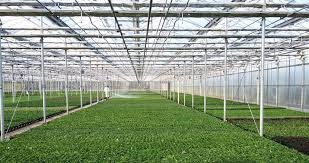
Features
Crop Protection
Inputs
Greenhouse Grower Notes: ‘Zero tolerance’ hard to achieve
February 7, 2012 By Graeme Murphy
Zero tolerance” is a term we often hear associated with pests and diseases in the crops we grow.
Zero tolerance” is a term we often hear associated with pests and diseases in the crops we grow. But it is important to think about what it actually means and whether it is a realistic goal.
 |
|
| Western flower thrips are a major concern for growers; once established in the greenhouse, they’re difficult to control. Advertisement
|
There is probably one situation where zero tolerance has real meaning and that is with regard to regulated (or quarantine) pests. Under such circumstances, there is often considerable effort put into eradication and trade barriers associated with such pests and diseases to ensure that the term is taken very seriously.
However, for established pests (e.g., western flower thrips, various aphid and whitefly species), “zero tolerance” is often used with less justification.
Plants being exported are often cited as a reason for pesticide use or as a reason not to use biological control; and it is true that plants heavily infested or damaged by disease or insects are likely to be refused entry into the importing country.
LOW LEVELS OF COMMON PESTS ARE NOT UNUSUAL
However, low levels of common pests are not unusual and we only have to think of the widespread movement of pests around the world in ornamental plant material to realize that zero tolerance has a fairly hollow ring to it.
The eradication of pests (i.e., achieving “zero tolerance”) was felt to be a real prospect when synthetic pesticides first became widely used in the late 1940s. However, as pests developed resistance to pesticides, and the long-term impact of that was realized, eradication became a futile goal and only pursued in exceptional circumstances such as described above for quarantine pests.
So, why then do we still hear the term “zero tolerance” used as if it is a realistic objective, when it hasn’t been achieved after years of pesticide use? And why are pesticides still held up as a means of achieving it?
A NEED FOR ACCEPTANCE THAT PESTS ARE INEVITABLE
The simple fact is that well-established pests requiring routine control strategies on a regular basis will not be reduced to zero. There needs to be an acceptance by all in the industry – breeders, propagators, finishing growers, retail growers, wholesalers and the public – that there is a level of pests that can be tolerated.
Certainly, it is a low level – ornamental crops by definition are grown because they look good – but nonetheless low levels can be present in crops without downgrading their value.
Acceptance of a low level of pests also results in a change of attitude from one of pest control to pest management, making use of all strategies to maintain pests at or below a tolerable level. That level of tolerance will vary by crop, by season, by the market in which it is being sold and by the individual grower, but the most important thing to remember is that it can never be zero.
Graeme Murphy is the OMAFRA greenhouse floriculture IPM specialist, Vineland.
Feedback sought on last year’s Grower NotesAuthors also want to know topics you’d like to see tackled this year?By Wayne Brown, Gillian Ferguson, Shalin Khosla and Graeme Murphy — OMAFRA It is one thing to write articles to inform growers about production issues such as scheduling a crop, nutrition, pest management and growth regulation. However, it is another thing entirely to know the impact of those articles. Feedback from readers often occurs directly to the author when an article has particular relevance to a grower. But the broader views of the readership are seldom (if ever) heard. In early 2011, we conducted a readership survey to get feedback on the value of OMAFRA’s Greenhouse Grower Notes. We are again giving readers the opportunity to comment on these features through an online site called Survey Monkey. The questionnaire itself can be done in less than five minutes and can be found at http://www.surveymonkey.com/s/greenhousegrower. Once there, follow the instructions. The responses to the questionnaire will be automatically tabulated and available to help us make the articles we write for Greenhouse Grower Notes more useful to you. To jog your memory, the articles published under Greenhouse Grower Notes in 2011 are listed with their titles, with links to the actual articles on the Greenhouse Canada website. We’re also very interested in finding out what topics you are interested in seeing covered in 2012. |
Print this page